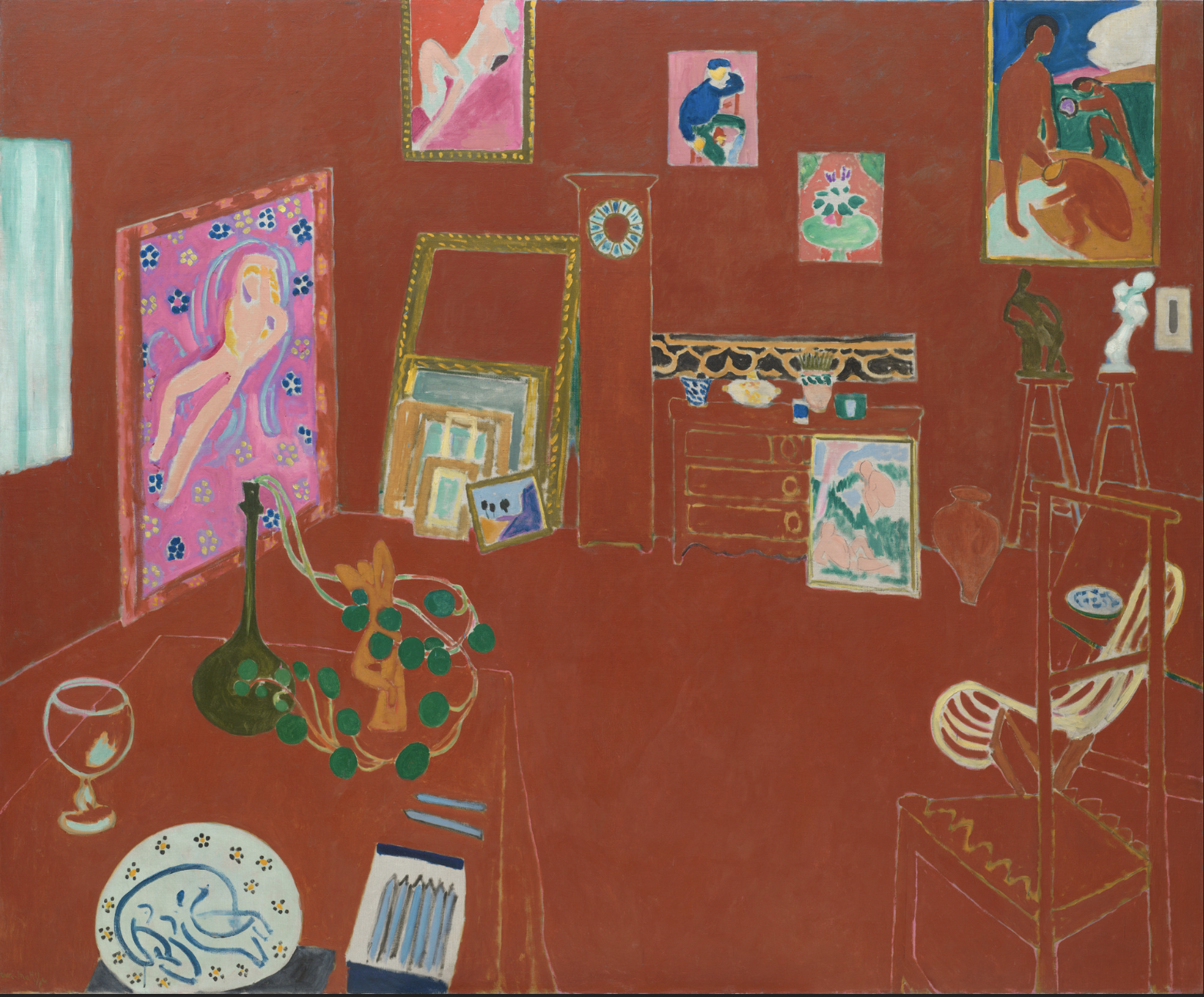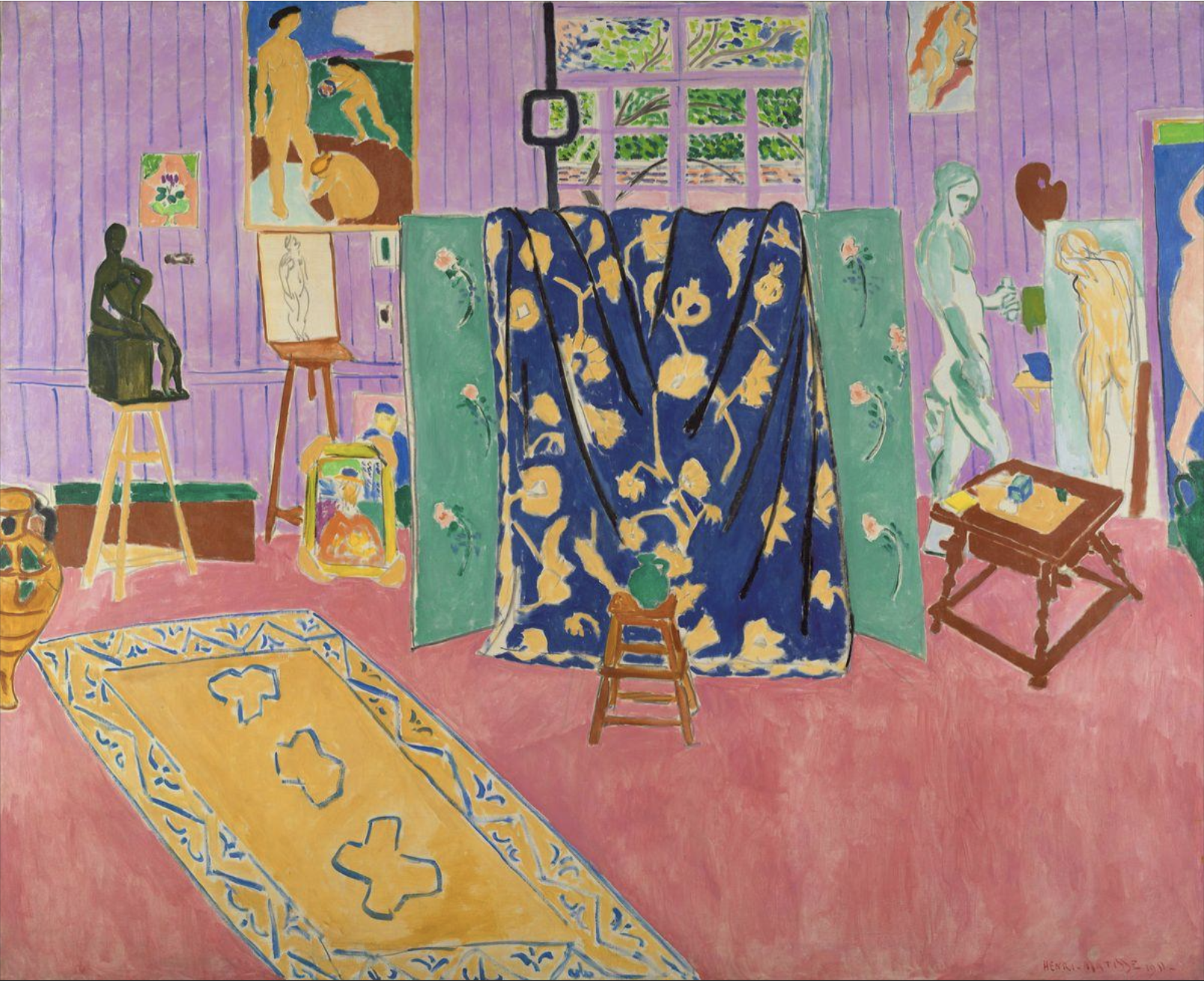The Red Studio
In 1911, Henri Matisse painted L’Atelier Rouge (The Red Studio). It is said that he painted it after visiting Spain and seeing traditional Islamic art. This work was commissioned and subsequently rejected by the Muscovite art collector Sergei Shchukin, Matisse’s longtime patron.

This aesthetically gorgeous piece thus remained unwanted in the studio in which it was created. Matisse believed in his painting and showed it numerous times. But no one purchased it for a long time. The first time the French were able to see it was in 1926; later, it was bought by David Tennant, the founder of London’s Gargoyle Club. In 1948, the MoMA purchased this now-priceless painting for $29,000.
The Red Studio was harshly criticized, unappreciated, and misunderstood. However, for the past four years, this painting has been the subject of much love and close observation. From May 1, 2022 to September 10, 2022, the Museum of Modern Art in New York City presented an exhibition titled Matisse: The Red Studio, in which this work, along with several other works by Matisse, was on display. In this exhibition, this painting was properly revered.
What is so special about this work? Beyond its beauty, this work allows us to enter Matisse’s creative space: it is thus intimate and revealing. In his home in Issy-les-Moulineaux, in the suburbs of Paris, Matisse built the studio in which this and other art pieces were created. The Red Studio reflects what he saw in his surroundings as he painted it. This new creation thus showed Matisse’s perspective on his own his paintings. Highlighting Matisse’s self-referential process, the MoMA reunited in its exhibition various works or objects that once were together in Matisse’s studio and are depicted in the painting.
The Red Studio bewildered many not only for its use of such powerful—considered by many aggressive—Venetian red but what many saw as its defiance of depth. By eluding the expectation of a three-dimensional frame of reference, The Red Studio plays with spatial illusion.
The Venetian red that covers the canvas’s surface becomes part of everything, confusing the image, and, at the same time, leaving clues behind. In many ways the flat Venetian red, like the manifest content of a dream, reveals and conceals the latent content. By the use of modern technology such as scanners and microscopic views of cross sections, researchers working daily with this painting for the past four years have found something new each day.
Freud’s topographical view posits the three elements: unconscious, preconscious, and conscious. In An Outline of Psychoanalysis (1940), he says:
There is no need to characterize what we call ‘conscious’: it is the same as the consciousness of philosophers and of everyday opinion. Everything else psychical is in our view ‘the unconscious’. We are soon led to make an important division in this unconscious. Some processes become conscious easily; they may then cease to be conscious, but can become conscious once more without any trouble: as people say, they can be reproduced or remembered. This reminds us that consciousness is in general a highly fugitive state. What is conscious is conscious only for a moment. . . . Everything unconscious that behaves in this way, that can thus easily exchange the unconscious state for the conscious one, is therefore preferably described as ‘capable of becoming conscious’ or as preconscious. Experience has taught us that there is hardly a psychical process, however complicated it may be, which cannot on occasion remain preconscious, even though as a rule it will, as we say, push its way forward into consciousness. There are other psychical processes and psychical material which have no such easy access to becoming conscious but must be inferred, recognized and translated into conscious form in the manner described. For such material we reserve the name of the unconscious proper.*Beneath the layer of bold Venetian red, which it’s believed came later in the process and was applied after everything else was painted and dried—perhaps a month later, and perhaps in one shot—lie layers with hints of ochre, meridian green, blue, and pink. Thus, The Red Studio was not always red: the walls had vertical lines of meridian green and the floor was pink. Underneath the red, scholars believe that this painting was much more like Matisse’s The Pink Studio, a work of art that was accepted and acquired by Shchukin and is currently at the Pushkin Museum in Moscow.

In depicting his studio—including his own paintings displayed inside it—Matisse leaves traces of the images or figures that may lie underneath the red expanse: hints of green appear in the corner of Matisse’s reproduction of his own Young Sailor II (1906), hints of ochre emerge in the furniture. Even the flatness is perhaps misleading, since certain lines create perspective. It seems as if Matisse is inviting us to take time to discover what is beyond the surface, reminding us to consistently, patiently, and lovingly explore all of the layers of the work, rather than becoming stuck in the extensive red that appears to flatten the painting and resist conventional modes of depicting perspective.
Revolutionary concepts are those that make humans question their basic beliefs about themselves or the world. Freud, with his pièce de résistance, the notion of the unconscious mind, dismantled contemporary understandings of human knowledge and mastery of the conscious mind. Matisse used color in ways that few Western European painters did before him, and the flattened perspective of The Red Studio challenges our perception of space and even of reality. These ideas are born from minds that are ahead of their time, that create controversy and continue to exert an influence on us. And, no matter what resistance those ideas encounter, they are timeless.
* An Outline of Psycho-Analysis, in The Standard Edition of the Complete Psychological Works of Sigmund Freud, vol. 23, at 159—60 (James Strachey trans. 1964).